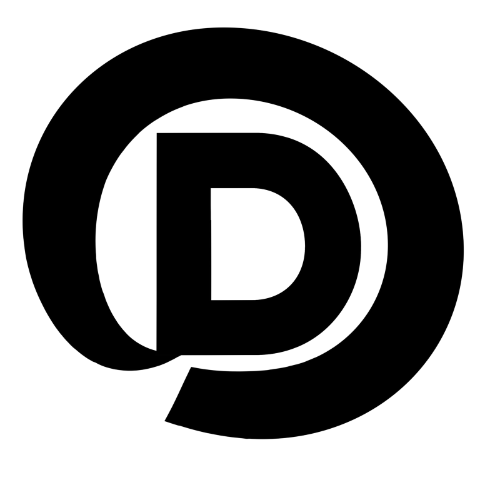Digital engineering creates not just far-right voters; it manufactures far-right candidates. Does the EU have the courage to take and enforce adequate structural measures to defend democracy against the weaponisation of digital platforms? How many dominoes can the EU afford to fall?
by Martin Gak
Defend Democracy is publishing a new analysis in the wake of Poland’s recent election, in which far-right nationalist Karol Nawrocki’s victory marked a major milestone in the evolution of digital political influence campaigning. Nawrocki’s victory should not be taken as an isolated event. If anything, this win is the latest confirmation –after the German and Romanian elections– of an illiberal and anti-democratic campaign model that, imported from the US and the UK, has been quietly maturing across Europe and the globe.
This new report unpacks the structure, mechanisms, and implications of the digital ecosystem that enabled Nawrocki’s rise, an ecosystem that no longer merely supports political movements but manufactures them and redraws political realities across vast political fields such as the EU. What began as fringe experimentation has become a scalable infrastructure for influence, one that evades regulation, bypasses traditional media, and redefines the terms of democratic contest.
Poland 2025
Karol Nawrocki’s electoral win in Poland is not the dawn of a new era—it’s the most striking confirmation yet of a far-right digital strategy that is already deeply embedded across Europe and beyond. What was once dismissed as fringe meme warfare or online agitation has matured into a scalable, effective, and exportable model of political influence—one that bypasses institutions and exploits the architecture of the modern internet to shift electoral outcomes.
Nawrocki was an obscure figure in Polish politics until very recently. His ascent was not driven by party loyalty, coalition-building or mainstream media attention. It was engineered through a multilayered digital ecosystem that operates independently of formal structures. This ecosystem doesn’t just create voters—it manufactures candidates.
At the core of the model is a structure of ‘capillaried’ distribution of ideological branding: nationalist, anti-globalist, anti-liberal, and deeply rooted in identity politics. Capillarised means that this content does not circulate primarily through party press offices or official communications outfits. Instead it’s picked up and repackaged by influencers, meme pages, regional and often local micro-celebrities as well as anonymous accounts operating across TikTok, YouTube, Telegram, Instagram and Facebook. Perhaps one of the most significant aspects of this operation is that these actors operating as vectors of distribution and promotion have no formal links to the campaign, which means that they operate by force of ideological alignment and not party affiliation.
Algorithmic recommenders
Few instruments are as powerful to distribute the content than algorithmic manipulation. Bot networks simulate engagement at massive scale, deceiving recommender systems into promoting this content under the guise of organic popularity. Recommender algorithms reward what moves fast and provokes emotion. By gaming these dynamics, the far-right which has refined the process over at least a decade, has come to dominate the digital space long before traditional media can catch up.
A May 2025 investigation by Global Witness illustrated the point with sobering clarity: TikTok’s algorithm showed undecided Polish voters five times more Nawrocki content than that of his centrist rival, Rafal Trzaskowski—even when both candidates were followed and engaged with equally. The platform didn’t just reflect voter interest—it actively shaped it. Similar dynamics have been documented in Germany, Hungary, and Romania, where the meteoric rise of people like Călin Georgescu in the first round of elections in 2024 was amplified by over 25,000 coordinated TikTok accounts. It was this discovery of electoral manipulation that prompted Romania’s constitutional court to annul its 2024 election.
Indeed, this is not just a Polish problem. If anything, Nawrocki’s win confirms the effectiveness of a strategy already in motion across the region and the globe. And it’s one that EU regulatory frameworks like the Digital Services Act (DSA) are structurally unprepared to counter. The DSA addresses content moderation and transparency, but it cannot pre-emptively address how recommender systems amplify disinformation and political extremism across borders and platforms.
What makes this model so dangerous is that it’s not illegal. It is not even coordinated in the traditional sense. It’s a decentralised, plausibly deniable and highly effective mechanism that undermines democratic deliberation. And now it has a new proof of concept.
The geostrategic implications
The success is not only a Polish success but potentially a redrawing of European geostrategic positioning. With Nawrocki in office, Poland is now positioned to obstruct EU consensus on migration, climate action, and judicial independence—joining a wider bloc of far-right governments and factions.
The far-right’s digital success is, in any case, not about ideology; it is about method. It reframes democracy as a battle of virality, where visibility replaces legitimacy. Campaigns are no longer fought in town halls or on debate stages, but in trending tabs and algorithmically curated feeds. And perhaps just as importantly: it circumvents rules of electoral campaigning in the EU.
To counter this, the report recommends a combination of offensive and defensive measures, which include regulating recommender algorithms, building counter-narrative digital ecosystems, deploying real-time monitoring units, and funding long-term digital infrastructure rather than short-term campaigns. Most importantly, it calls for shifting the EU’s strategic focus: if the far-right is winning the internet, then liberal democracy must stop treating it as a press release platform—and start treating it as contested terrain.
It is essential to recognise that Nawrocki’s victory is not an anomaly. His victory is a milestone in the far-right’s long digital march to power and to the occupation of the European project. Combined with Trump’s interference in European democracies, it is high time that EU leaders and national politicians prevent Europe from turning into a copy or a colony of the United States.
Access the full report: ‘Poland 2025. The digital engineering of Nawrocki’s victory‘.

Defend Democracy, 17 July 2025

